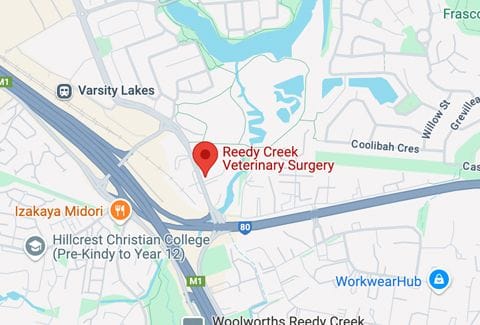How does a TPLO work?
A TPLO involves making a curved cut through the bone under the knee joint, and rotating the joint to a pre-calculated position then fixing the bones with a stainless steel plate and screws. This neutralises the forces in the joint, meaning the dog no longer needs a cruciate ligament!
How does a Lateral Suture work?
A lateral suture involves replacing the torn ligament with a synthetic band placed outside the joint but in the same orientation as the original ligament, thereby stabilising the joint.
Can they tear the ligament again after surgery?
- The original ligament is usually completely torn and does not grow back again. With a TPLO, there is no longer the need for a ligament, so they cannot suffer the same injury again. With a Lateral suture, it is possible for the synthetic ligament to fail for several reasons but generally, if the dog has been rested appropriately after the surgery and the joint has healed, the risk is low.
- Tearing of the meniscal cartilage is a common consequence of cruciate ligament tears and is always checked at the time of surgery and any tears removed. Even with successful surgery, it is possible for the dog to injure and tear the meniscus later down the track. Sometimes this requires a second minor surgery to remove the tear.
Will my dog have a normal life after surgery?
This depends a little on the degree of osteoarthritis already present in the joint as we cannot reverse arthritis; however, most dogs will return to a very normal level of function after surgery. Sometimes, that has to be a “new normal” in reducing high-impact exercise. Ongoing osteoarthritis is a lifelong goal after surgery. It is based on weight loss and control, exercise modification, and the use of joint supplements and anti-inflammatory medications in cases that need it.
)


